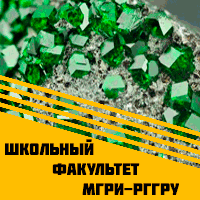Добрый день, Коллеги. Важное сообщение, просьба принять участие. Музей Ферсмана ищет помощь для реставрационных работ в помещении. Подробности по ссылке
Hawaiian volcanoes deep underwater perspectives / Гавайские вулканы с глубоководным прослеживанием
In the summer of 1963, when a group of Japanese scientists arrived at the aged building of the Hawaiian Volcano Observatory, run by the U. S. Geological Survey, there began a program of cooperation and friendship between American and Japanese volcanologists that continues to the present. The late Professor Takeshi Minakami, a top volcano-physicist long involved in research at various volcanoes, including Asama, then the most active volcano in Japan, led the Japanese group. The time coincided with a changeover in Hawaii, from the pioneering volcanologic studies of Harold Stearns, Gordon Macdonald, and Jerry Eaton to more comprehensive research by younger volcanologists. The Japanese team was also fortunate enough to witness a rift zone eruption at Kilauea volcano (Alae eruption, July 1963), a direct, eyeopening encounter with a volcano plumbing system in action. The time was also ripe for the field application of modern volcanological tools. We were especially fortunate to encounter a period of frequent eruption at Kilauea, which has since had continuing activity both at the summit and on the rift zones. During the last 40 years, Japanese volcanologists have thus become well acquainted with the research results of our American friends and their concepts of how Hawaiian volcanoes work despite the challenge posed by the great differences in structure and eruptive activity between Japanese and Hawaiian volcanoes. Nonetheless, from geophysical and paleomagnetic points of view, the Hawaii islands and the surrounding region is most likely underlain by a thick layer of electrically high conductive material, which in turn bears evidence that the volcanic activity in this region may be a manifestation of deep seated upwelling of hot mantle material, i.e., a plume. <...>




